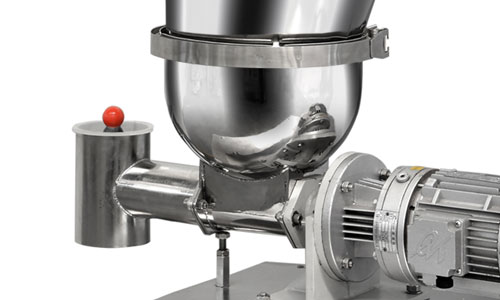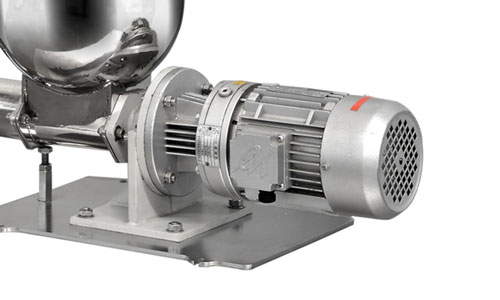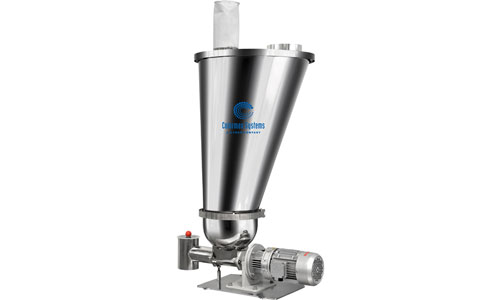Single Screw Volumetric Feeders
| Feeder Model | C/S-V-S60 |
|---|---|
| Feed Rates | 5-1,200L/h |
| Materials Fed | Pellet, free flowing powder, etc |
| Asymmetrical Hopper | 40L / 80L / 120L / 150L |
| Symmetrical Hopper | 10L / 40L / 80L / 120L / 180L |
Designed for batch and continuous applications where volumetric feeders serve best
Volumetric feeders offer a low cost and easy to use option for batch or continuous applications where the bulk density of the material being fed is consistent or when precise feed accuracy is not critical to the quality of the end product.
For greater feed accuracy, volumetric screw feeders are frequently employed in gain-in-weight batching applications. When process requirements are more demanding, screw feeders with gravimetric scales and loss-in-weight controls provide a higher level of accuracy.
At Colormax Systems, we make volumetric screw feeders that provide reliable and consistent performance. Single screw volumetric feeders are a great choice for easy flowing materials, while twin screw volumetric feeders are an ideal solution for bulk materials which are more difficult to handle. Volumetric feeders are available in a variety of models and hopper sizes to meet a wide range of feed rates.
Single Screw Volumetric Feeder
The Colormax Systems Single Screw Volumetric Feeder is designed to provide volumetric feeding for a variety of materials including pellets, granules and free flowing powders.
Single screw feeders are available with a wide range of interchangeable feed screws depending on the material being fed. The feeder is mounted on a painted steel base plate. All material contact parts are made of stainless steel. The feeder is easily disassembled for cleaning or change-over. The special design of the feeding bowl is unique, and employs a horizontal agitator to improve material fill of the screw flights. The feeding bowl design allows material to flow evenly from all directions into the screw and effectively avoids material build-up, making feeding more accurate.
Optimum feed screws are determined based on material characteristics of the bulk solid to be fed. Following are estimated feed rates for free flowing materials. For feed rates at either end of the range, feeder testing is recommended.



